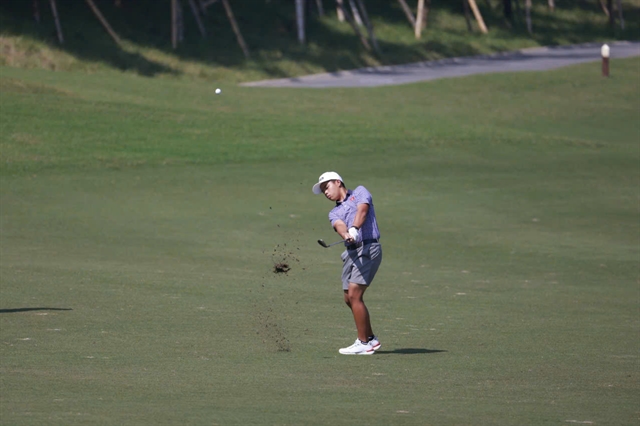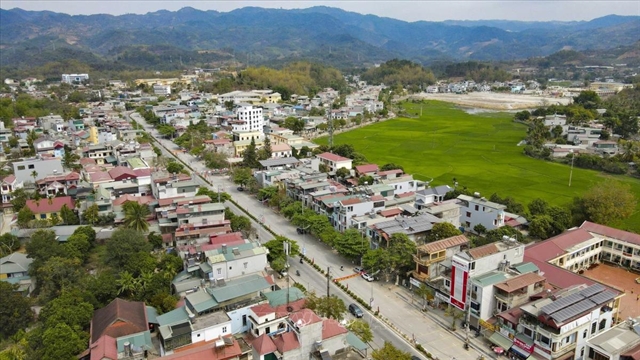 Society
Society
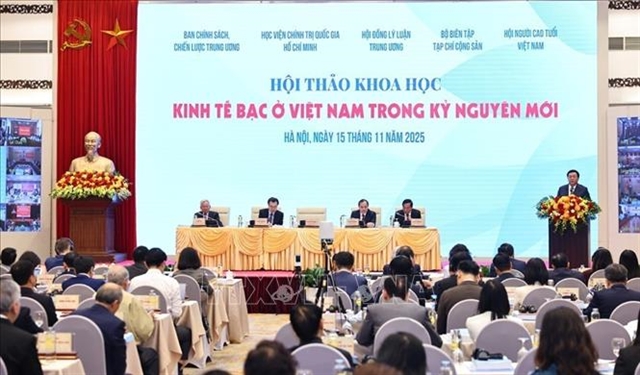
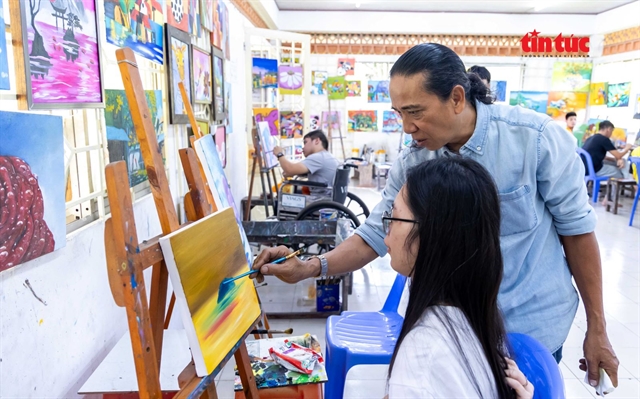 |
| Teacher Nguyễn Hoàng tirelessly teaches drawing techniques to his students at the HCM City Vocational Education Centre for People with Disabilities and Orphans. — VNA/VNS Photo An Hiếu |
HCM CITY — For almost twenty years, the HCM City Vocational Education Centre for People with Disabilities and Orphans in Bà Điểm Commune has stood as a “second home” for generations of young people with disabilities, offering free vocational training alongside a caring, dignified environment where they can grow with confidence and hope.
More than just vocational training facility, the centre has become a bridge linking teachers, philanthropists and the wider community, helping disadvantaged youth build confidence, acquire skills and take steps towards independent, fulfilling lives.
Teachers who become ‘second fathers’
Behind the centre’s long-standing mission are dedicated teachers who treat their students like family.
Nguyễn Hoàng, who has taught drawing at the centre for 13 years, still remembers his early challenges.
Each student had a different condition. Some painted with their mouths, others with their feet.
“I had to observe each one closely to create individual lesson plans. Teaching drawing is already difficult; teaching here is four times harder. Yet I always feel incredibly happy.”
Day after day, Hoàng patiently guides students through colour, lighting and composition techniques.
Many now produce emotive still-life and landscape works that reflect their strength and perseverance.
“The paintings may not be technically perfect, but they are honest and full of life. Anyone looking at them can feel the students’ determination,” he said.
Hoàng hopes the centre can one day build a small workshop to help students sell their artwork. “It would give them income and allow them to keep pursuing their craft, especially those coming from remote provinces.”
In the industrial sewing classroom for hearing-impaired students, the atmosphere is almost silent except for the hum of sewing machines. Communication relies entirely on eye contact, gestures and sign language.
“Teaching hearing-impaired students is not easy,” said Trịnh Văn Tuấn, who has taught sewing at the centre for more than 10 years. “Teachers must learn sign language, use slow demonstrations and sometimes repeat a movement ten times. I always stand close to make sure they stay safe.”
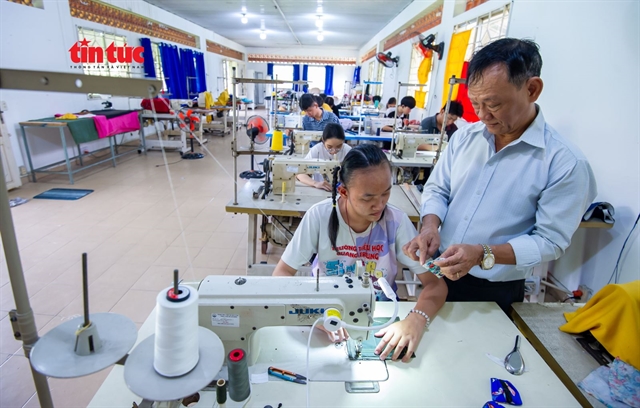 |
| Teacher Trịnh Văn Tuấn has spent more than 10 years teaching industrial sewing at the HCM City Vocational Education Centre for People with Disabilities and Orphans. — VNA/VNS Photo An Hiếu |
He is not only a teacher but also a mentor. “Some students feel discouraged or miss home. I try to understand them, talk to them and help them gain confidence. I hope businesses will be more open to hiring people with disabilities so they can have stable jobs.”
Among the youngest teachers is Nguyễn Văn Thiên, who teaches laser design and engraving. Many of his peers pursue corporate careers, but Thiên chose to remain at the centre.
“I want to share technological knowledge with students who rarely have access to it,” he said.
Teaching students who often can use only one hand requires considerable patience. “Sometimes it takes twice as long as teaching a normal class. But seeing them complete a product always makes me happy.”
Carrying students forward through knowledge, opportunity
Established in 2006, the centre has provided free vocational training to around 1,000 young people with disabilities. Training programmes range from electronics, accounting and industrial sewing to painting, hand embroidery, clay flower making, massage therapy for the visually impaired and laser engraving.
Eighteen-year-old painting student Nguyễn Thị Lê Na said: “On my first day, I never thought I could create artworks like I do now. Thanks to the teachers’ patience, I learned how to mix colours, build composition and complete a painting. I want to master a skill so I can support myself.”
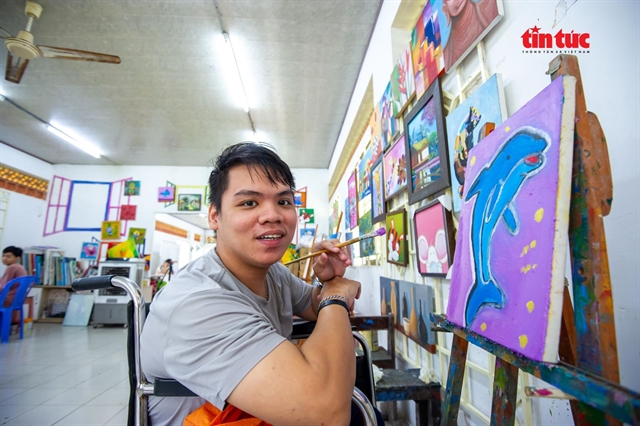 |
| Võ Văn Thông, 26, finds daily happiness in his drawing class. Three years of study have enabled him to paint both still-life and landscape artworks. — VNA/VNS Photo An Hiếu |
Bùi Sỹ Hoàng, 24, from Nghệ An Province, who studies laser cutting, added: “We receive free accommodation and meals. I want to study hard and find a stable job after graduation so I can support my family.”
According to Đỗ Trung Tín, Director of the centre, its mission has remained unchanged: training youth with disabilities while mobilising community support.
“Our goal is not only to teach vocational skills but to help students regain confidence, recognise their value and build a strong foundation for independent living,” Tín said.
Because students have diverse disabilities, teachers cannot rely on conventional methods. “Our teachers must be patient and compassionate. Our approach is literally ‘hand-over-hand’ instruction,” he noted.
After nearly two decades of operation, many facilities require renovation. “We hope the community and businesses will support us in upgrading infrastructure and improving the learning environment. Most importantly, we need employers willing to hire trained students,” he added.
To address job shortages among graduates, the centre is developing a plan to establish a production workshop where students with strong skills can work, practise and earn income.
The workshop will also serve as a showroom to promote and sell student-made products. “This will create stable employment and help them earn a living while we continue seeking partnerships with businesses,” Tín said.
Beyond vocational training, the centre strives to remain a safe, supportive environment where young people with disabilities can grow with dignity, resilience and the confidence to shape their own future. — VNS

